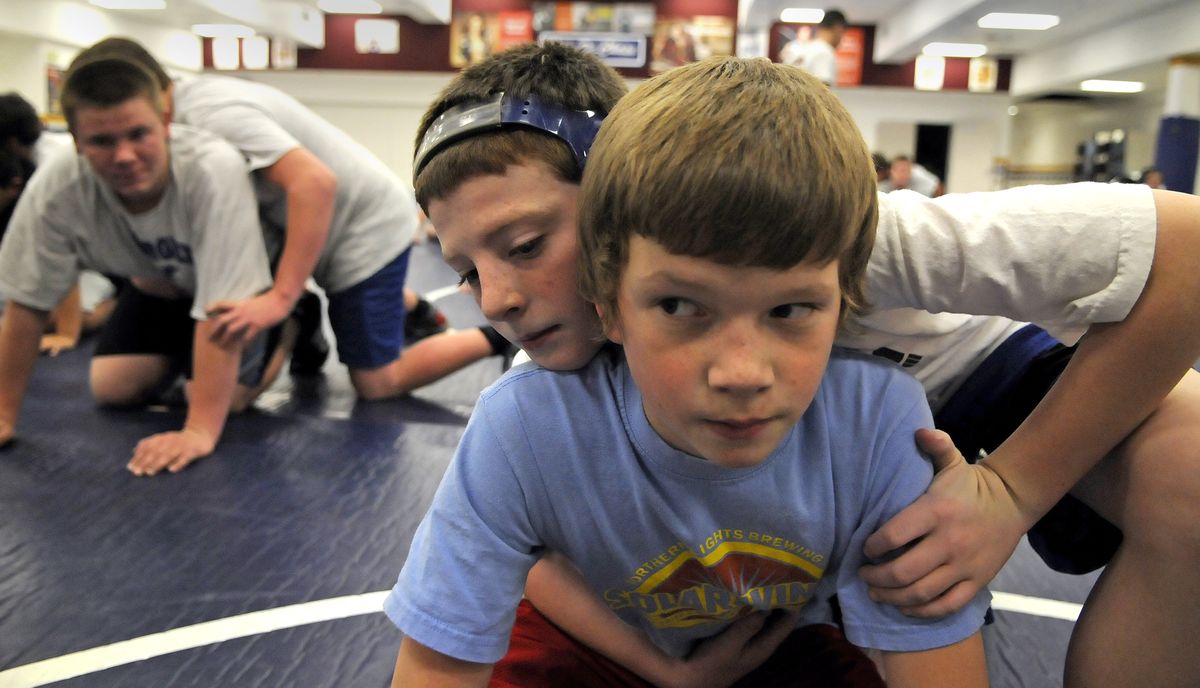With budgets tight, middle schools seek to keep kids active

Eighth-grader Seairra Rice comes from a family of wrestlers, but she’s the first girl in her family to participate in the sport.
“She wanted to show the boys she could do what they could do,” said her dad, Chris Rice, who watched his daughter during a recent wrestling practice at Spokane’s Chase Middle School. “She took a lot of flak from the girls at first for doing it, but she pushed through.”
Middle school athletics “are an opportunity for girls to try all sports,” said Lorri Slauson, the school’s athletic director. “It gives them the freedom to try something like wrestling.”
Opportunities such as the one afforded to Rice, or boys who are unsure which sports might be a good fit, could be eroded if middle school sports are eliminated during tough economic times for school districts.
A few years ago, Eastern Washington middle school athletic directors had no concerns about sports programs falling victim to budget cuts. But after the region’s largest district – Spokane Public Schools – proposed cuts to its middle school sports, other districts realized no one is safe.
Principals and athletic directors met for the first Eastern Washington Middle School Conference earlier this month. The group wanted to brainstorm creative ways to save money and consider how to educate their communities about the value of the program.
“We’re kind of in crisis mode right now,” Slauson said. “We don’t want to be a line item on a budget. Give us a dollar amount and let us figure out how to get there.”
A big expense is fees for state-licensed game officials, whose price went up $2 per game this year.
“Official fees are becoming cost-prohibitive, especially for the high-poverty schools,” said Joe Slauson, Sacajawea Middle School athletic director. The cost is about $9,000 annually per school.
School officials would like to be able to use college students or volunteers who are qualified to officiate but cost less money. But because the school districts belong to Washington Interscholastic Activities Association, which sets the guidelines for school athletic programs, districts are forced to use state officials.
The only exception is if the association does not have enough officials available, the schools can use the less expensive, qualified referees.
“We don’t want to lose our programs,” said Dave Tikker, a Mead School District athletic director. “We are just looking for some grace here.”
Since receiving relief from those fees may take a while, Eastern Washington officials are trying to think of other money-saving options, which include ride sharing with other middle schools, no return bus from events, reducing the number of games, and charging a transportation fee.
Additionally, some want to consider allowing advertising at baseball fields or on basketball courts.
Districts have avoided putting ads in high-profile places for a long time, said Craig Bush, Mountainside Middle School principal. “But things are tough.”
In addition to finding money-saving ways to maintain the middle school athletic programs, advocates hope that highlighting the benefits of students engaging in physical activity is also a key.
Fourteen published studies analyzing data from approximately 58,000 students between 1967 and 2006 have investigated the link between overall participation in physical activity and academic performance, according to Active Living Research, a national study. “Eleven of those studies found that regular participation in physical activity is associated with improved academic performance.”
“I can’t tell you how many times I’ve heard from a teacher: Well, at least I got nine weeks out of him while he was in wrestling,” Lorri Slauson said.
Other national studies show regular physical activity can help prevent drug use and diabetes, and teach healthy eating habits.
“If we don’t have this, we don’t know where they are going to be,” said Chuck Vaughn, Chase Middle School’s head wrestling coach. “All that’s left is pay programs.”
Slauson adds, “If we lose sports out of our school system, poor kids are going to lose the opportunity to play. That sounds horrible, but that’s a reality.”